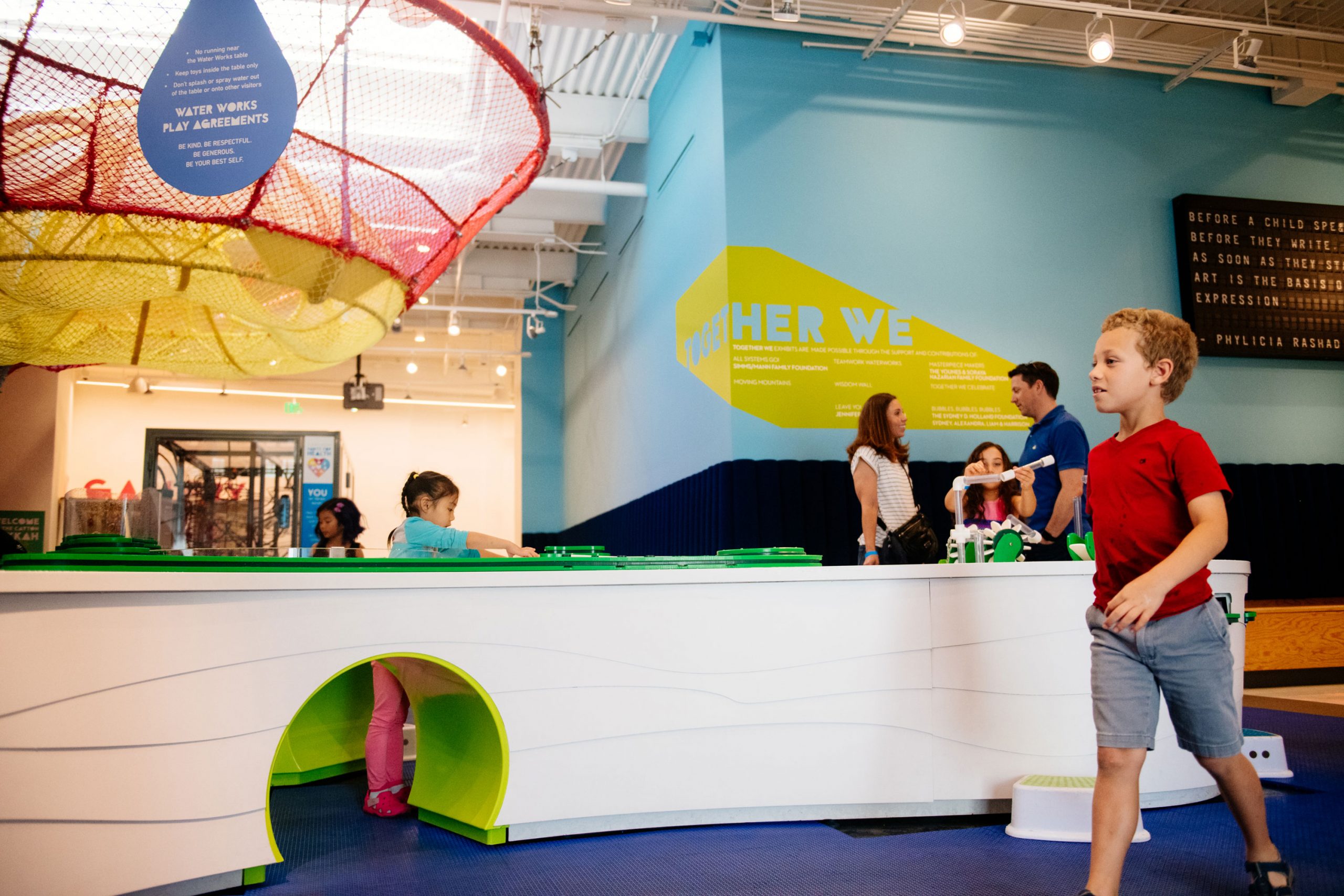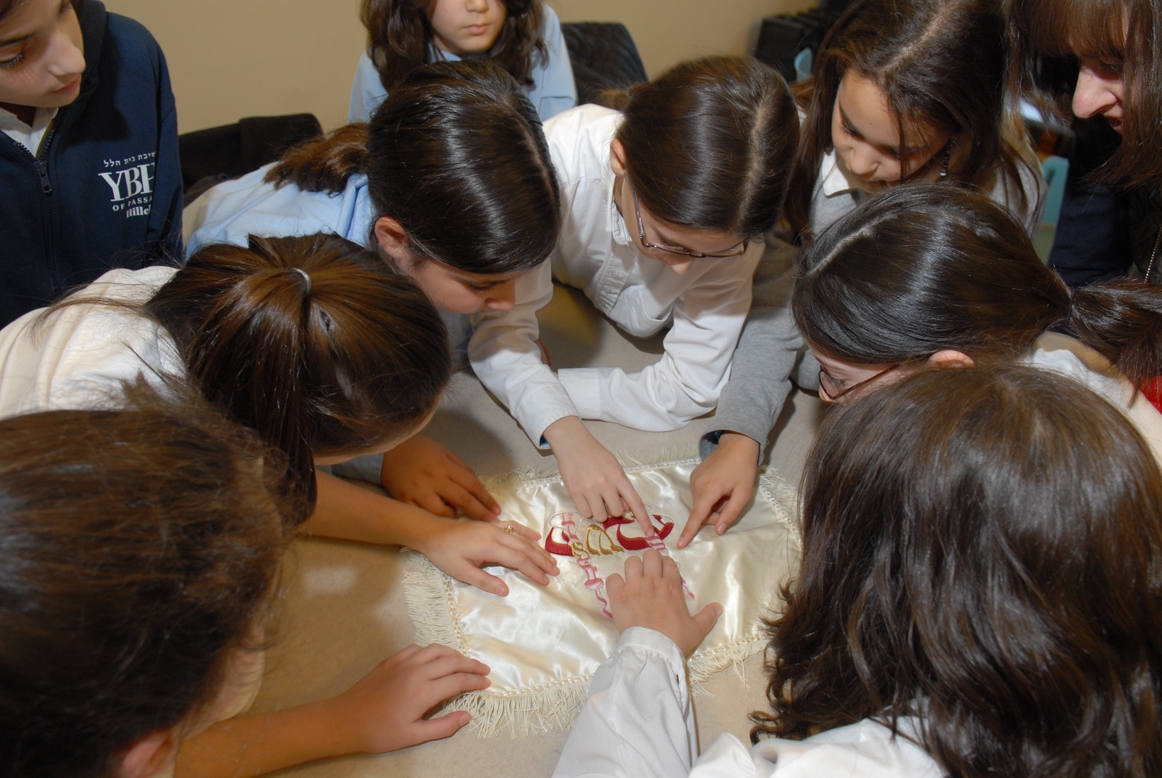Jewish Museums Help to Repair a Fractured World
Instead, museum directors and educators are moving their institutions toward experiential, participatory engagement with the aim not only of attracting more visitors and stakeholders, but with a heightened sense that they are uniquely positioned to build identity and community in a society seemingly often fractured.
This fall, at the Tenement Museum on the historic Lower East Side, students from New York City public schools and elsewhere are busy submitting pictures of personal objects reflecting their family’s journey of immigration to and assimilation in America.
For one student of Indian descent, it’s a dia, a traditional candle used during a festival of lights in December. And for one Jewish student, it is a Hanukkah menorah that his father brought with him to the United States from Israel in 2001.
This is an ambitious exercise in community and identity building, as museum officials launch a new initiative, Your Stories, Our Stories. The open-sourced project will position students across the country as curators of their own family journeys and a universal, ever-expanding digital display of objects, stories, and the commonalities of identification between and among ethnic groups.
“Museums are changing and evolving and taking on new roles,” said Morris Vogel, President of the Tenement Museum. “At the same time, they are thinking about what they can do best and better than anyone else, and any other institution. It grows out of a conviction that what we do and what we can do is just that important.”
Simultaneously, across the country at the Contemporary Jewish Museum (CJM) in San Francisco, visitors need only walk into the museum store to get a taste of the experiential, participatory trend that is meant to break down barriers across segments of society. A combination pop-up shop and display presents the notion of ethnic t-shirts and what they say about identity and pride in the 21st century.
The exhibition, Hidden in Plain Site! T-Shirts and the Curation of Identity, is anchored by a video project spearheaded by Citizen Film in San Francisco with funding from The Covenant Foundation. It includes digital elements designed by students at Stanford and Columbia Universities exploring the common threads among ethnicities in choice of t-shirt wear. For sale nearby: a selection of Jewish-themed t-shirts.
Visitors are encouraged to post pictures of their own identity t-shirts and the stories behind them on a dedicated Instagram page, much like the Tenement Museum is soliciting public submissions for its digital objects gallery.
Both of these initiatives are sparking awareness and conversations that don’t necessarily exist elsewhere. Museums—with a creativity and ability to open a level of participation enabled by technology—are perfect catalysts to generate them.
“Focusing on meaning and impact and salient experiences, we become places inspiring much-needed civic and social and cultural dialogue,” said Lori Starr, CJM Executive Director.
“Museums can and must offer safe, neutral ways to wonder and question and to not know and to grow and to examine our own aspirations. They are places that are neutral enough for such inquiry, and for asking questions of each other. That is the sweet spot for museums, especially in the digital realm where the potential for engagement with new communally-created content is limitless.”
Jenna Weissman Joselit is the Charles E. Smith Professor of Judaic Studies and Professor of History at The George Washington University, where she also directs its brand new program in Experiential Education and Jewish Cultural Arts. She said that Jewish museums in particular are finding new followers as audiences, especially young Jews, increasingly eschew traditional affiliations and are drawn to creative spaces of expression and belonging instead.
“Museums used to be stewards of preservation exclusively,” she said. “But they are assuming a new role as catalysts of community. Jewish museums see their role as an expansive one, as a central venue.”
“They are well positioned to reflect the preoccupation—especially of younger Jews—who are searching for a place to be Jewish but not in a heavy handed way. That is not to say that museums are light, but that they can do things that synagogues and philanthropies cannot.”
In some cases, this means tearing down walls not only digitally, but pushing into the cities in which they live real time Jewish values, becoming civic partners and changing society in the process.
The Zimmer Children’s Museum in Los Angeles is on the ground floor of the building housing the Jewish federation there and attracts visitors who are predominantly Jewish—over 55,000 visitors annually are members of Jewish families. The museum’s youTHink initiative is a living example of how the classic Jewish value of tikkun olam, repair of the world, is emanating from the museum itself.
The initiative sends educators into Los Angeles Title One public schools and provides social responsibility lessons using art, teaching leadership skills and community involvement to middle and high school youth in the broader community. Recent projects include coastal cleanups, lobbying of government officials, production of anti-racism and anti-bullying public service announcements, and action to combat domestic violence.
“Within the museum, we use creative arts to initiate conversations about issues in society and community that need repair,” said Esther Netter, the museum’s CEO. “youTHink is the museum beyond our walls.
“A museum is something a community has as a meeting place and as a space with content that is shared. Sometimes it is a collection of Renaissance art, and sometimes it is performance art. In our case, it is a treasured collection of big ideas, like mitzvot, intended to teach, to activate and to inspire and connect and sustain the community around us.”
Even more traditionally curated exhibits have the power to spur conversations, build bridges between communities, and affect social and political dialogue and change, and Jewish museums are committed to fueling installations in such a way.
Just last week, Yeshiva University Museum opened “Threatened Beauty,” an exhibition in which Israeli-based artist Andi Arnovitz deconstructs ancient Islamic art as a reflection on present day realities in the Middle East, including the West’s confrontation with Iran over nuclear capabilities.
The installation, said Jacob Wisse, the museum’s director, is meant to generate thoughts within and beyond the museum on a pressing issue of international concern, and nourish the notion of global citizenship in the process.
“Resonating through these works is a vivid artistic dialogue of good and evil,” he said. “What more important role do we have as a museum than to intersect with such a momentous issue, at such a momentous time in our history?”
Back at CJM, one needs only to view the monthly event calendar to get a sense of how Jewish museums are literally redefining themselves and blurring the old-school boundaries of society’s institutions.
In the museum’s Zim Zoom Family Room, multiple-generation families are bonding as they work together on art projects. In another room, a Dance for Life program is underway with seniors from all backgrounds—some in wheelchairs and others with degenerative conditions—bonding and moving together under the instruction of a skilled dance artist.
“We are helping society move forward in a way that is positive,” said Starr. “We don’t have to be retelling the past. We are contemporary. We are creating the Jewish future.”
By H. Glenn Rosenkrantz, for The Covenant Foundation



